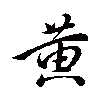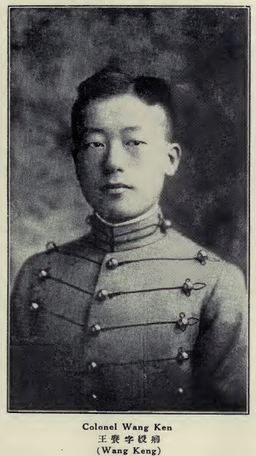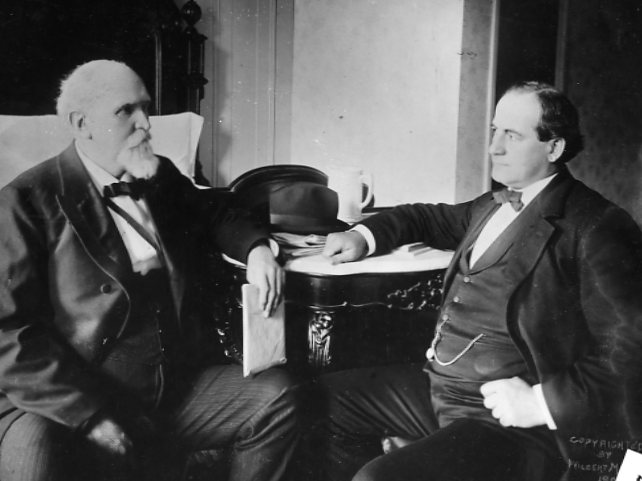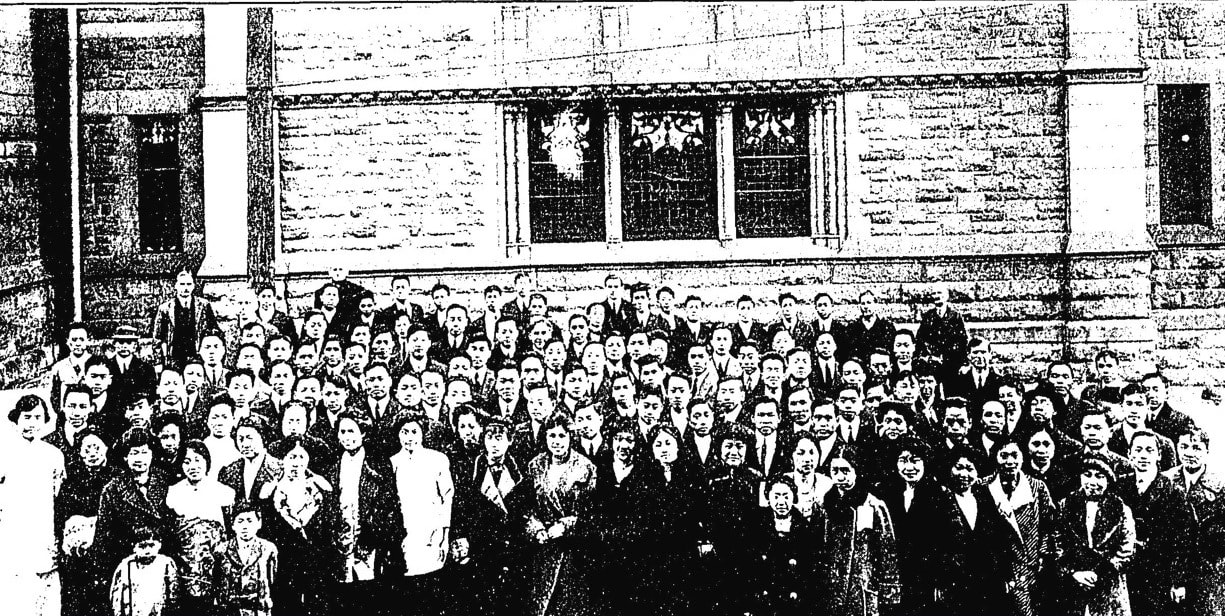Not to Be Ministered Unto
Princeton University & Student Volunteer Movement, 1913
Han Liang is still remembered as one of Princeton’s first four students from China: he, Ken Wang and Kenyon Vanlee Dzung entered at the same time in 1913 as juniors, a year after Hsu Kun Kwong became Princeton’s first student from China. They promptly formed a Chinese Students Club, with Kwong as President, Han Liang as Secretary and Dzung as Treasurer. Around this time, Y. L. Tong also joined Princeton's graduate program.
|
Little is known about Kwong and Dzung, but we know that Ken Wang (王賡 Wang Geng) was another ambitious Boxer Indemnity Scholar from Han Liang’s own cohort – his name can be found in 13th place on the scholarship roster of sixty-three names. Originally from Wuxi (無錫), he also started out at the University of Michigan, moving on quickly to Columbia, then Princeton. There he earned the nickname “Shakespeare” for his love of literature.
Continuing on to West Point, where he ranked 12th in his class, and a prominent military career in China, Wang could be said to have found a modern way to fufill the Chinese “scholar-warrior” ideal that married learning with action. Han Liang roomed alone during his junior year in Reunion Hall (6 North Middle), but was Wang’s roommate in his senior year in West College (17 North). It would be interesting to know if they kept in touch after Wang transferred to Columbia after their first year at Michigan or in any way consulted each other about associating themselves with the university that had launched America’s president. |
Over the 1913 Christmas break – his first while at Princeton – Han Liang had the opportunity to attend a remarkable event in Kansas City. From that well-documented occasion we catch a glimpse of what Han Liang felt about the Christian church that had set him on his present educational course.
The 7th International Convention of the Student Volunteer Movement for Foreign Missions was a major happening of its day. Part religious revival meeting, part Peace Corps rally, it boasted over 5,000 participants, including 3,000 students, and a long roster of celebrity speakers. The topic at hand was “The World-wide Expansion of Christianity”. The Daily Princetonian reported that the gathering that ran from December 31 to January 4 was the largest to date and “one of the most inspiring”.
Operating under the watchword “the evangelization of the world in this generation”, the Student Volunteer Movement (SVM 學生義務運動 Xuesheng Yiwu Yundong) was an interdenominational phenomenon. In its heyday up to the 1920s, the SVM would mobilize a total of over 30,000 men and women, generally highly educated and hailing from the best colleges and universities across the US. About a quarter of these volunteers went on to serve overseas. Many of the teachers who signed on to become Tsinghua's first faculty members, and probably some of the Anglo-Chinese College's teachers, were likely to have been SVM volunteers.
The 7th International Convention of the Student Volunteer Movement for Foreign Missions was a major happening of its day. Part religious revival meeting, part Peace Corps rally, it boasted over 5,000 participants, including 3,000 students, and a long roster of celebrity speakers. The topic at hand was “The World-wide Expansion of Christianity”. The Daily Princetonian reported that the gathering that ran from December 31 to January 4 was the largest to date and “one of the most inspiring”.
Operating under the watchword “the evangelization of the world in this generation”, the Student Volunteer Movement (SVM 學生義務運動 Xuesheng Yiwu Yundong) was an interdenominational phenomenon. In its heyday up to the 1920s, the SVM would mobilize a total of over 30,000 men and women, generally highly educated and hailing from the best colleges and universities across the US. About a quarter of these volunteers went on to serve overseas. Many of the teachers who signed on to become Tsinghua's first faculty members, and probably some of the Anglo-Chinese College's teachers, were likely to have been SVM volunteers.
|
Princeton’s delegation was made up of nineteen students, including Han Liang, the university’s four other Chinese students, and fourteen non-Chinese. They had the honor, along with students from Penn State, of eating lunch with US Secretary of State William Jennings Bryan. Here was a further opportunity for Han Liang to acquaint himself with American politics firsthand. Although Bryan is best known today as the lawyer who represented the anti-evolution side at the Scopes Monkey Trial in the 1920s, he was then a leading politician who had spearheaded the Democratic Party’s nomination of Wilson and himself stood as the Democratic candidate in three presidential elections.
Bryan's particular blend of inspiration, morality and call to action was not unrelated to the impulses behind the Student Volunteer Movement and other movements such as the YMCA and Progressivism. The 700 pages of conference proceedings demonstrated a relatively secular “social Gospel” approach, focused on the reform of society as much as the saving of souls. The SVM constantly stressed that “mere piety” was insufficient and that volunteers required a range of professional skills, such as medicine and teaching. |
While the underlying SVM cause comes across as culturally arrogant and imperialist, the 1914 convention was notable for seeking to empower “native” missionaries. Local Christian leaders from China and other countries were repeatedly given the floor, and an entire sub-conference on “China’s Religious Awakening” was held in parallel. The Chinese Students’ Alliance and Chinese Christian Students Association of North America joined forces to turn out 130 Chinese students from fifty institutions across the country, including Han Liang's Princeton group.
The students were encouraged to comment on how Christianity could contribute to the future of their new republic. Han Liang was one of eight Chinese students whose remarks are recorded. In speaking up, he cited the biblical quote inscribed on the YMCA building in Shanghai from where he had departed China: “Not to be ministered unto, but to minister”. He sang the praises of Christian selflessness and endorsed selfless service as being exactly what China needed. However, it appears he stopped short of saying that what China needed was Christianity. He mentioned having “studied” Christianity, but did not call himself a Christian.
In what was left unsaid, Han Liang appeared to express the ambivalence that many Chinese felt about a religion that had brought territorial ambition along with selflessness to China’s shores. Perhaps like many of his generation, Han Liang could be most wholehearted about Christianity when it stayed on the level of the YMCA, providing physical fitness and sports facilities and a wide array of social services.
At the conference, an exact tally of American Protestant converts in China was reported: 209,737. China was the SVM’s most popular destination – not just because of its size, but also because of an American fascination with Chinese culture and traditions. Yet after forty years of work, Christianity had not proved to be of equal fascination to China’s 400 million people. Conversion would accelerate over the next decade, but Christianity’s greatest impact would derive from its “sidelines” in education and medicine.
For Han Liang, the SVM quadrennial meeting in Missouri would have been a chance to see another corner of America, and to interact with people working in every region of the world, with students interested in world affairs, and with fellow Chinese studying across the country. His countrymen came from eleven Chinese provinces and fifty-nine institutions in twenty-one US states. It appears that they convened for the full Christmas holiday, not just the four days of the SVM conference.
The students were encouraged to comment on how Christianity could contribute to the future of their new republic. Han Liang was one of eight Chinese students whose remarks are recorded. In speaking up, he cited the biblical quote inscribed on the YMCA building in Shanghai from where he had departed China: “Not to be ministered unto, but to minister”. He sang the praises of Christian selflessness and endorsed selfless service as being exactly what China needed. However, it appears he stopped short of saying that what China needed was Christianity. He mentioned having “studied” Christianity, but did not call himself a Christian.
In what was left unsaid, Han Liang appeared to express the ambivalence that many Chinese felt about a religion that had brought territorial ambition along with selflessness to China’s shores. Perhaps like many of his generation, Han Liang could be most wholehearted about Christianity when it stayed on the level of the YMCA, providing physical fitness and sports facilities and a wide array of social services.
At the conference, an exact tally of American Protestant converts in China was reported: 209,737. China was the SVM’s most popular destination – not just because of its size, but also because of an American fascination with Chinese culture and traditions. Yet after forty years of work, Christianity had not proved to be of equal fascination to China’s 400 million people. Conversion would accelerate over the next decade, but Christianity’s greatest impact would derive from its “sidelines” in education and medicine.
For Han Liang, the SVM quadrennial meeting in Missouri would have been a chance to see another corner of America, and to interact with people working in every region of the world, with students interested in world affairs, and with fellow Chinese studying across the country. His countrymen came from eleven Chinese provinces and fifty-nine institutions in twenty-one US states. It appears that they convened for the full Christmas holiday, not just the four days of the SVM conference.
|
WHAT HAN LIANG SAID
"How Christianity can meet the needs of China socially is too far-reaching a topic to be discussed in so short a time. But, from the point of view of the needs of society, we can say that, no matter whether we become mechanics, doctors, or lawyers, we are to save China socially. The foundation of the best social service is unselfish service. you will not save China if you are serving for your own sake. you will not save her by working for yourself or for your reputation. If you are going to try to save China selfishly, the task is hopeless for you. The most fundamental thing in such work is unselfishness. Now, in Christianity, as I have studied it, there is no more striking feature than unselfishness. Its very essence is to serve others and not to serve ourselves. Those of us who on our way from China stopped at the Shanghai Young Men's Christian Association will remember the motto engraved on the front of the building: 'Not to be ministered unto, but to minister.' If I leave no other thought with you, fellow-countrymen, I want to suggest this motto to you: 'Not to serve self, but to serve others.' This is the thing needed in China, and you will find it in Christianity. –Mr. H. L. Huang, of Princeton University." Cited on p. 14 of: Chinese Students and China's Religious Awakening : report of the conference of the Chinese Students' Christian Association in North America, held under the auspices of the Seventh International Convention of the Student Volunteer Movement for Foreign Missions, in the Independence Avenue Methodist Episcopal Church of Kansas City, Missouri, during the afternoons of Thursday, Friday, and Saturday, January 1, 2, and 3, 1914 (Chinese Students' Christian Association in North America, 1914) |
MORE ABOUT THE S. V. M.
OTHER SOURCES Princeton's first Chinese students:
Ken Wang:
Princeton students and Kansas City meeting:
|



